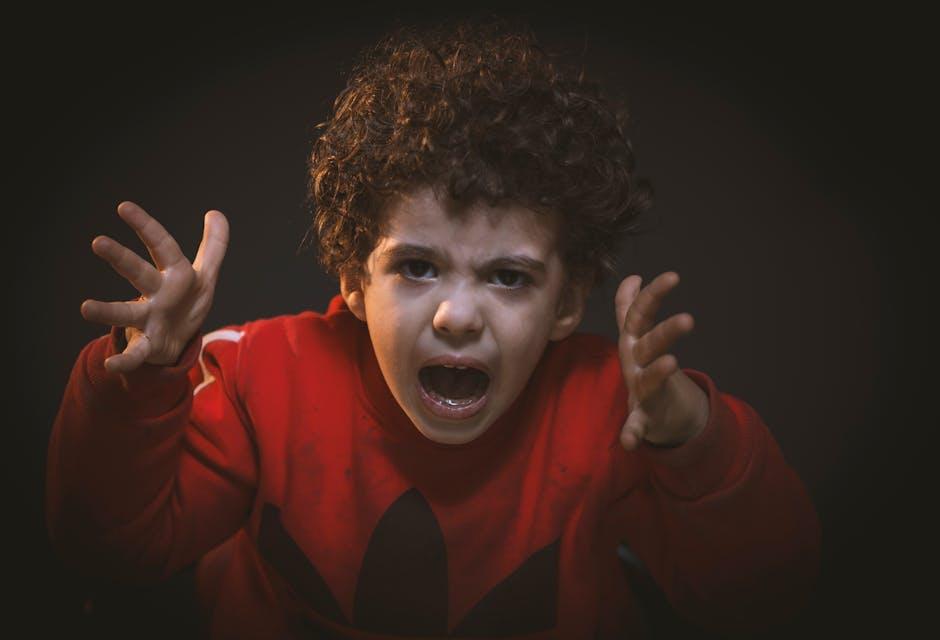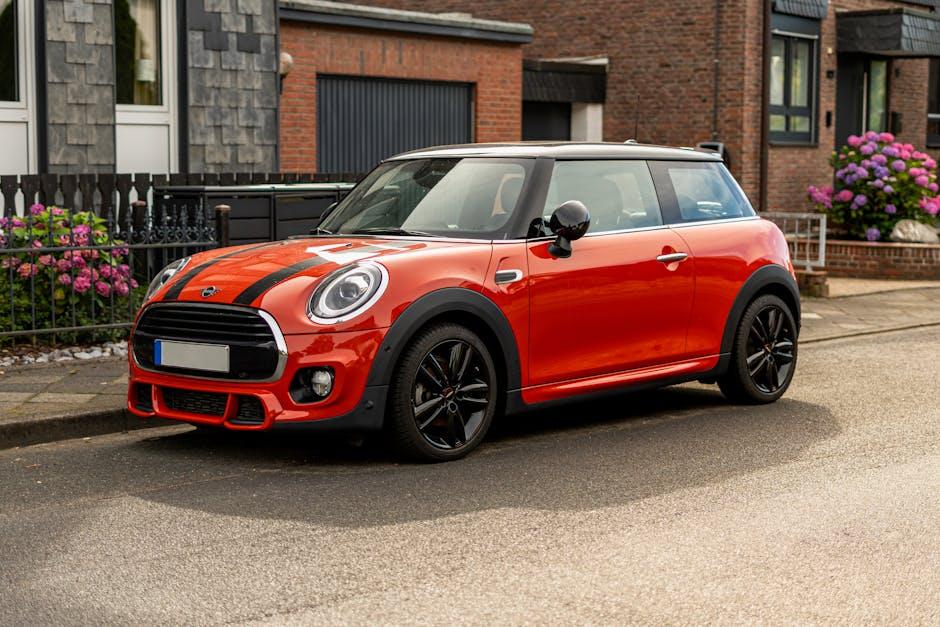In a world where the hustle and bustle of daily life can sometimes feel like an endless merry-go-round, it’s not just adults who are feeling the strain. Kids, too, are spinning in the whirlwind of school, extracurricular activities, screen time, and social drama. The result? Little humans with big stress! Before you picture your child resembling a miniature CEO glued to their smartphone, let’s hit the brakes. It turns out, the antidote to this pint-sized pandemonium might be simpler (and a lot more fun) than you’d think. Enter “.” In this article, we’ll explore innovative, child-friendly mindfulness strategies that’ll have your kids finding inner peace faster than you can say “timeout.” So, buckle up and prepare for a journey into the world of mindfulness for mini-yogis.
Finding Zen in the Playground: Why Mindfulness Matters for Kids
Imagine a playground where kids aren’t just running wild, but also pausing to breathe deeply and appreciate the moment. Mindfulness isn’t just for grown-ups trying to survive rush hour traffic or waiting in line at the coffee shop; it’s incredibly beneficial for children too! Practicing mindfulness helps kids stay calm, focused, and emotionally balanced. They learn to navigate their world with a sense of peace that is as cool as ice cream on a hot day. Here are some techniques to get your little ones started:
- Breathing Buddies: Have kids lie down with a stuffed animal on their belly. Ask them to breathe in and out slowly, noticing how their buddy rises and falls. It’s like a mini roller coaster, but much more chill!
- Mindful Snack Time: Encourage kids to eat a snack slowly, savoring each bite. Is it crunchy like a leaf pile or smooth like their favorite cartoon character? The more details, the better!
| Mindfulness Technique | Benefit |
|---|---|
| Breathing Buddies | Improves focus and reduces stress |
| Mindful Snack Time | Enhances sensory awareness |

From Tantrums to Tranquility: A Parent’s Guide to Mindful Breathing
Picture this: your little one is mid-tantrum, arms flailing like a windmill, and you’re trying to remember the lyrics to “Let It Go.” Sounds familiar? Well, how about a more serene solution? Introducing mindful breathing! 🌬️ It’s easier than getting a toddler to share their favorite toy. Start with the Balloon Technique: have your child sit comfortably, close their eyes, and imagine their belly is a balloon. As they slowly inhale, the balloon inflates. Exhaling, the balloon deflates. It’s a game-changer and a giggle-inducer!
- Animal Breaths: Encourage your child to roar like a lion when they exhale, or buzz like a bee. It’s silly, fun, and incredibly calming.
- Color Breathing: Ask them to think of their favorite color. As they breathe in, imagine that color filling their body and calming them down.
Another neat trick is the Five-Finger Breathing exercise. Simply have your child trace the outline of their hand with a finger from the other hand. As they trace up a finger, they breathe in, and as they trace down, they breathe out. Easy peasy! For visual learners, a small table showing the steps might help:
| Step | Action |
| 1 | Trace up a finger |
| 2 | Breathe in |
| 3 | Trace down |
| 4 | Breathe out |

Mini Meditators: Fun and Easy Techniques for Little Minds
Kids are bundles of energy, and getting them to sit still can sometimes feel like an impossible mission. But don’t worry! Introducing mindfulness techniques doesn’t mean transforming your living room into a monastery. It’s about bringing fun and easy methods that sneak in a bit of calm. Mini meditations can be as simple as focusing on their favorite stuffed animal’s belly as they breathe in and out. Nature walks can also serve as a mindful activity—encouraging your child to notice and name things they see, hear, and smell.
If your kid likes to wiggle, that’s perfectly fine! You can transform this energy with dynamic mindfulness practices. Try shaking out the jitters with a quick 30-second dance party followed by a moment of stillness to “feel the silence.” Another cool idea? Create a Mind Jar—fill a jar with water, glitter, and food coloring, then shake it up! Watch the glitter settle together and talk about how it’s like our thoughts settling down when we calm ourselves. Here’s a quick look at some ideas:
- Mini Meditations: Breathing with stuffed animals.
- Nature Walks: Naming sights, sounds, and smells.
- Dynamic Mindfulness: Dance and chill sessions.
- Mind Jar Fun: Creating and observing a glitter jar.

Mindful Mischief: Turning Everyday Chaos into Calm Moments
Children have boundless energy and vivid imaginations, sometimes making it tricky to get them to sit still. But fear not, parents and teachers, for mindfulness techniques can magically tranform that whirlwind into a gentle breeze! Think of it as teaching kids to be calm superheroes. Here are some child-friendly activities that can help them focus and find their inner peace:
- Belly Breathing: Ask your kid to lie down and place a favorite toy on their belly. Let them breathe in deeply through the nose and watch the toy rise and fall like a miniature elevator. Instant giggles and calmness!
- Rainbow Journey: Encourage children to close their eyes and visualize a rainbow. Guide them to imagine walking under each vibrant color, feeling a different emotion with each step. It’s like a color-filled adventure! 🌈
- Mindful Snack: Transform snack time into a mini mindfulness retreat. Ask kids to describe the texture, taste, and smell of their food. Who knew a grape could be so fascinating?
| Activity | Tools Needed | Duration |
|---|---|---|
| Belly Breathing | Toy | 5 min |
| Rainbow Journey | Imagination | 10 min |
| Mindful Snack | Food | 10 min |
Implementing these fun techniques can help your child develop their ability to focus and soothe themselves amidst the hustle and bustle of daily life. Plus, it’s a delightful way to bond and share some calm moments together, not to mention a potential for some hilarious storytelling time!
Q&A
Q&A: Focus and Calm for Kids – Mastering Mindfulness with a Smile
Q1: What exactly is mindfulness for kids?
A1: Picture mindfulness as a superhero power – one that helps kids focus on the present moment, like a squirrel with a laser pointer! It’s all about tuning in to what’s happening right now, whether it’s feeling their breath, noticing the color of the sky, or hearing the sound of a pet hamster’s wheel at 2 AM (yep, we know those little guys can be noisy!).
Q2: Why should kids practice mindfulness?
A2: Mindfulness for kids is like giving their brains a spa day! It helps them manage stress, improve focus (a must for winning hide-and-seek), and even sleep better – because a rested brain is a happy brain. Plus, it equips them with emotional super-tools to handle life’s ups and downs, making tantrums as rare as a unicorn sighting (one can hope!).
Q3: How can kids practice mindfulness?
A3: Here are some kid-approved techniques:
- Breathing Buddies: Have them lie down with a stuffed animal on their tummy and watch it rise and fall as they breathe. It’s cuter than watching a kitten video.
- 5-4-3-2-1 Countdown: This game involves naming 5 things they can see, 4 things they can feel, 3 things they can hear, 2 things they can smell, and 1 thing they can taste. It’s a scavenger hunt for the senses!
- Mindful Coloring: Take those crayons and coloring books and make art a zen-tastic experience. Staying within the lines is optional (and less stressful!).
Q4: How do I get my child to practice mindfulness without it feeling like homework?
A4: The secret is to make mindfulness fun, like turning broccoli into a pizza topping (okay, that might be a stretch). Incorporate it into daily routines with playful activities, like a “quiet time” challenge during car rides or a gratitude moment before bed where you both share the best parts of your day. Or create a ‘mindfulness jar’ filled with ideas they can pick from. And remember, the less it feels like a chore, the less you’ll hear those dreaded “eye-rolls.”
Q5: Are there any tools or apps that can help with mindfulness for kids?
A5: Absolutely! You’ve got a buffet of apps and tools at your disposal. Try apps like Headspace for Kids or Calm, which are packed with guided meditations and breathing exercises wrapped in a digital burrito of fun. There are also books with engaging stories that incorporate mindfulness – because who doesn’t love a good bedtime story with a side of zen?
Q6: Can mindfulness help my child at school too?
A6: You bet your last piece of chocolate it can! Mindfulness can turn homework meltdowns into a more serene experience, almost like popping bubble wrap. Focusing skills boost concentration for those tricky math problems, and staying calm keeps test anxiety at bay – so they can tackle fractions like a fearless ninja!
Q7: What if my child isn’t interested in mindfulness?
A7: Don’t worry, mindfulness isn’t a one-size-fits-all cape. Start small and be patient, like teaching a goldfish to play fetch. If one method doesn’t click, try another – variety is the spice of mindful living. And lead by example; kids mimic adults, so the more zen you are, the more they’ll want to join the relaxation party (“If you do your mindfulness, you might get out of doing the dishes” could also work as motivation – just saying!).
Q8: Any final tips for making mindfulness a part of our daily life?
A8: Sure thing! Think of it as adding sprinkles to everyday moments. Create a family mindfulness ritual, keep it light and playful, and celebrate the small victories. And remember, laughter is a part of mindfulness too – it’s like meditation for your funny bone. So, enjoy the journey and keep those smiles coming!
Happy Mindful-ing! 🌟🧘♂️🎨
This Q&A is designed to give caregivers an approachable, light-hearted way to introduce mindfulness to children, ensuring the process is both educational and entertaining.
In Retrospect
As we wrap up our delightful journey through the world of mindfulness for young minds, remember that teaching kids to focus and find their calm isn’t about turning them into mini Zen monks who can perfectly balance on one toe. Instead, it’s about giving them the tools to handle the ups and downs of life without spontaneously combusting into a human tornado. Who knew that breathing exercises, a dash of creative visualization, and a sprinkle of gratitude could be more effective than a wizard’s spell?
So, before you hand your child the remote control or offer them a sugary treat as a quick fix for life’s little frustrations, try some of these mindfulness techniques. You might just find that a bit of quiet magic can go a long way. And hey, if nothing else, you’ll have some new material for your next family talent show—carefully curated by little masters of the mindful arts.
Stay calm, stay focused, and may your home be filled with the sweet sound of peaceful breathing (and, let’s be honest, the occasional giggle-snort).


